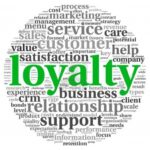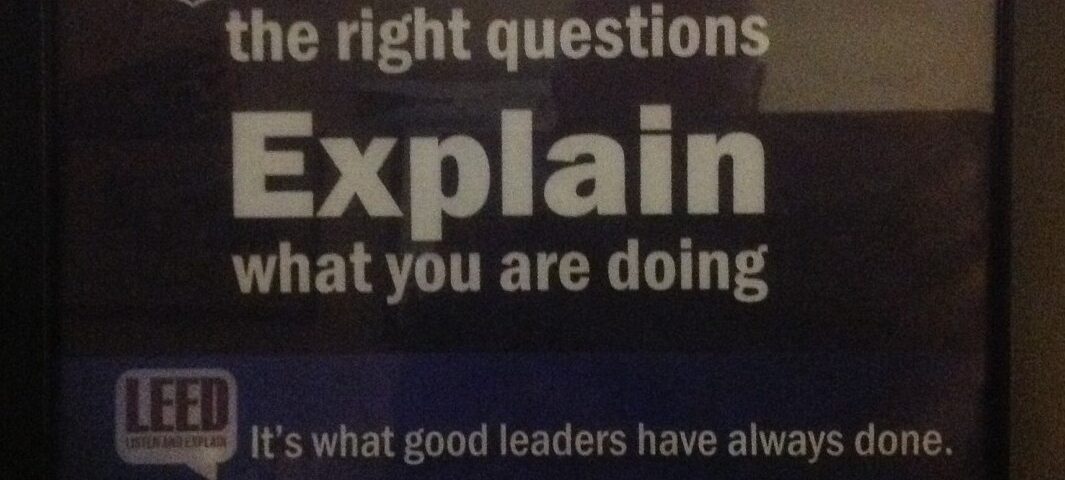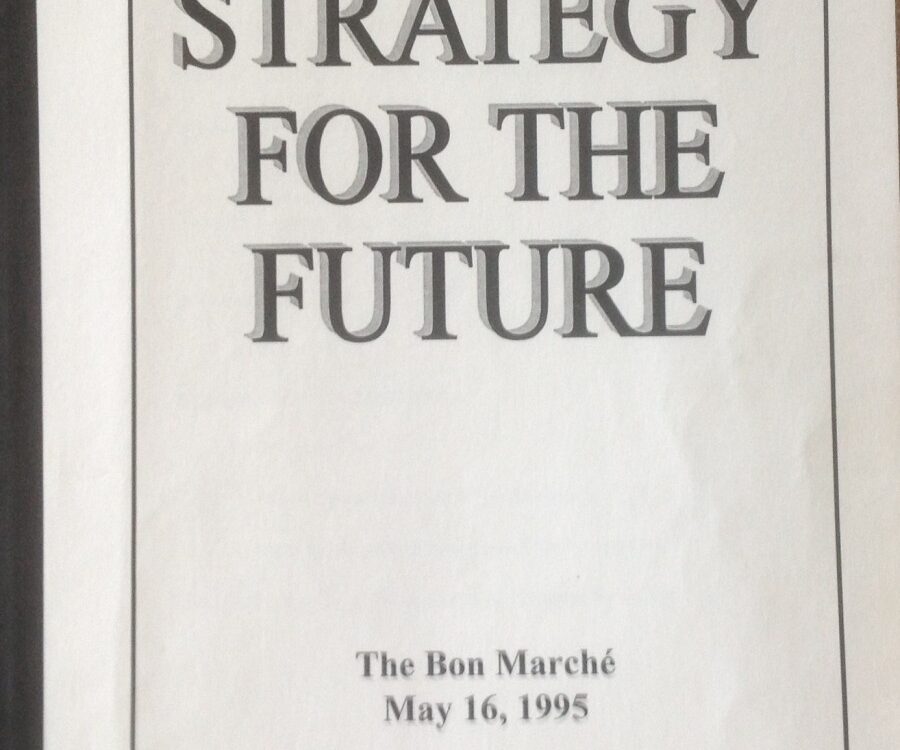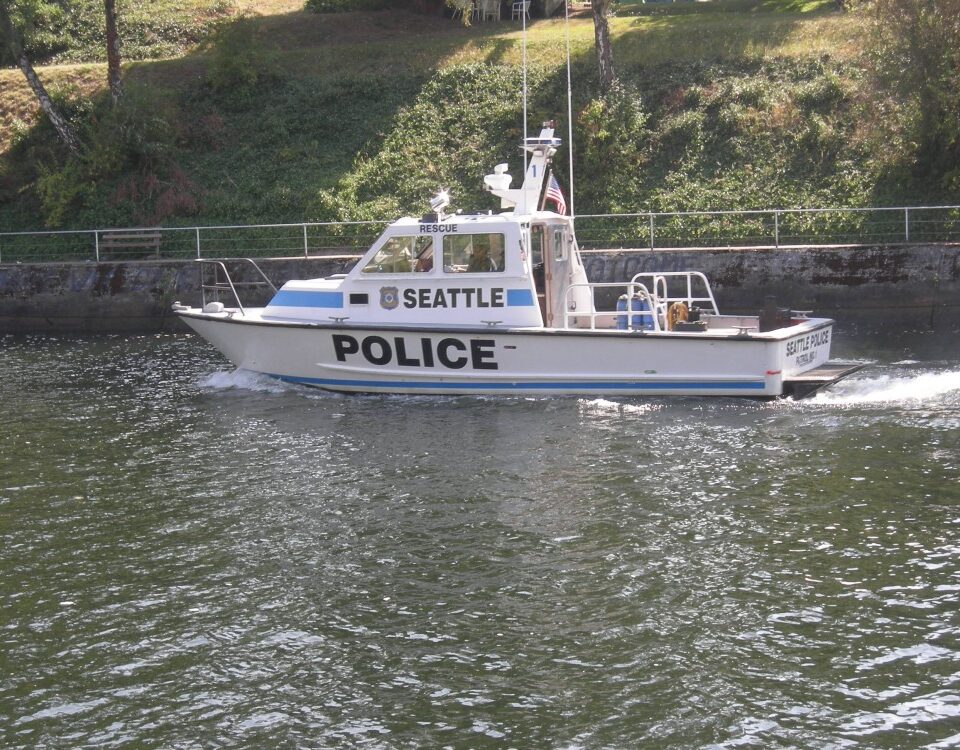
Yes! to Customer Loyalty
February 19, 2014
The Four Pillars of Justice Based Policing
March 9, 2014THE BACKGROUND
In 2006 I engaged in helping the King county 911 call center reduce their employee turnover. The prior 2 years the Call Center had experienced high turnover and the expense of this turnover was very high, as a new employee took 6 months to get hired -spent weeks in training and then was placed on personal coaching for the better part of 1 year. In all this could cost upwards to over $100,000 for each new employee. When ever I am discovering an organizations culture I listen for 2 statements that clearly define a cultures most common problems -#1 I thought we talked about this and #2 I wasn’t trained that way. Both of these statements are sure culture killers. I can almost always predict that cultures with these 2 problems will have significant group factions -that define the “in” people and “out” people [clicks]. The managers will be stressed out and will disengage not knowing what to do, and turnover will be high while finding good people will be hard. If management is willing to survey the employees [see the post– 911 employee survey] the scores will be very low and Senior management will be trying to figure out what to do. This was the state of the 911 call center. The core problem for this center was the fact training in these type organizations training is more personality based vs, standards based. The trainers are always the individuals that were perceived as having the best performance, which does not always equate into being the best trainers. What was happening was a disconnect between the training and the management over cite-
The managers were responsibility for the Quality Assurance audits – where they would listen to a couple of recordings of an individual call receiver and rate 13 questions on a yes or no scale — so answered the phone right [yes or no] was judged the same as handled the call right [yes or no]. The problem with this method is the 1st question is about the script of answering the phone, the 2nd question is about the more open ended effort to prioritize the call and handle getting the needed information in a useable fashion for the dispatcher to manage the communications with the enforcement officer. I developed 6 questions that could be judged either yes or no the rest of the question were scored on a 1-5 scale [1= low-5=high] [BELOW IS THE SCALE I DEVELOPED FOR THE CALL CENTER] The new scale was shared with all of the managers and trainers and then I had all 26 managers and trainers rate the same two 911 calls . The first call was a traffic accident and the second was a domestic violence call. there was consistency for the yes or no questions but the questions rated 1 to 5 were all over the board, they could see how “I WASN’T TRAINED THAT WAY” also showed that they also were not graded fairly either.
Below is the document I produced to force both the training and management quality assurance to work as a common approach– the next 2 years I was told that only 2 people left the call center and both did so for leaving the area reasons–
HOW DOES YOU ORGANIZATION MANAGE THE CONSISTENCY BETWEEN WHAT YOU TRAIN AND HOW YOU JUDGE PEOPLES PREFORMANCE?
HAVE YOU EVER HEARD “I WASN’T TRAINED THAT WAY?”
King County 911 Call Receiver Standards
MONTHLY CALL HANDLING CRITIQUE FORM
Employee Name: Review Date:
Reviewing Supervisor:
Call handling critiques will be conducted monthly on five calls (two priority/in-progress type calls, two calls focusing on customer service, and one “routine call” such as an alarm company reporting an alarm, another agency calling to relay information, straight forward IRIS reports, etc.)
Calls will be selected by the Tapes Archivist (April) and will be emailed to both the Call Receiver and Supervisor. Call Receivers are encouraged to suggest reviewing a call they thought went exceptionally well, and a call they would like to discuss because of its unique challenge.
Call Receivers and Supervisors critique the calls individually, the meet and discuss the calls.
All calls will be assessed using the attached standards.
QUALITY ASSURANCE REVIEW STANDARDS
Section #1
Correct Greeting
Phone answered using the appropriate greeting:
“911, what are you reporting?”
“Police Services (or non-emergency) Operator, how may I help you?”
Yes No N/A
Determined Location and Jurisdiction of the problem and of the RP and confirms all information is correct.
Yes No N/A
Correct Transfer Procedure
Screens the call sufficiently to determine if a transfer is required – if required, correctly announces the call and stays on the line an appropriate amount of time for the circumstances.
Yes No N/A
House/Apartment/Business
Confirms and documents location that deputies are responding to is a house, apartment, or business.
Yes No N/A
Proper Initial Screening
Determines the nature of the problem and the timeframe of the incident.
Yes No N/A
Reporting Party Info
Obtains and/or confirms caller’s name and phone number, confirms spelling as needed.
Yes No N/A
Comments
Write comments for any No answers as to what went wrong.
If Call Receiver uses proper voice tone, word choice and inflection while handling callers with special problems, document this good work.
SCORING STANDARDS
Meets Standards
Receives Yes on all 6 standards
Minor Improvement Needed
Receives 1 No on the 6 standards
Significant Improvement Needed
Receives 2 No’s on the 6 standards
or repeats a No from a previous monthly review during the last 4 months
Unsatisfactory
Continually makes those errors described in the “Significant Improvement Needed” rating, training has been provided yet little or no progress has been shown
Exceeds Standards
Directs conversations to gather all pertinent information quickly and accurately, actively listens to obtain information without repeating questions, additionally deals with the callers in a constructive manner, making extra effort when handling callers with special problems, with proper voice tone, word choice and inflection.
QUALITY ASSURANCE REVIEW STANDARDS
Section #2
Controls the Conversation 1 2 3 4 5
Meets Standards
Uses the proper phrase when answering all calls, quickly determines the nature of the call and timeframe of the incident, consistently directs conversations to quickly and accurately obtain and relay the essential information in the order of importance, solicits missing information as needed, gains control of hysterical callers in most cases using proper voice tone, word choice and inflection.
Minor Improvement Needed
Has trouble with one of these skills: Needs to improve greeting, is inconsistent in keeping control of the conversation, has trouble obtaining essential information, has difficulty ensuring accuracy of the information, does not use proper voice tone/word choice/ or inflection, does not quickly determine officer safety, not able to use accepted techniques to calm hysterical or angry callers, or regularly asks caller to repeat information.
Significant Improvement Needed
Has trouble with two or more of the required skills.
Unsatisfactory
Continually makes those errors described in the “Significant Improvement Needed” rating, training has been provided yet little or no progress has been shown.
Exceeds Standards
Directs conversations to gather all pertinent information quickly and accurately, actively listens to obtain information without repeating questions, additionally deals with the callers in a constructive manner, making an extra effort when handling callers with special problems, demonstrating proper voice tone, word choice and inflection, and clearly explains what they can do to help the caller.
Reasonable Create to Entry Time 1 2 3 4 5
A primary call should be handled in less than 1 minute 45 seconds
and secondary call in less than 8 minutes.
Meets Standards
The Call Receiver regularly handles calls within the target timelines.
Minor Improvement Needed
The Call Receiver has shown some problem regularly handling calls within the target timelines, and acts stressed and short to the caller.
Significant Improvement Needed
The Call Receiver regularly has problems handling calls within the target timelines.
Unsatisfactory
The Call Receiver has two “Significant Improvement Needed” ratings within the last four months.
Exceeds Standards
The Call Receiver always handles calls within the target timelines.
Officer Safety 1 2 3 4 5
Meets Standards
The Call Receiver quickly determines any potential Officer Safety issues – asks caller about drugs, alcohol and/or weapons involvement as appropriate, looks for any history of the subjects’ involvement or other Officer Safety concerns that might be currently active. The CAD detail is properly documented and call is transferred within the 1 minute 45 seconds target timeline. Throughout the entire call, the Call Receiver maintains proper voice tone, word choice and inflection. The Call Receiver continues to provide new information when appropriate.
Minor Improvement Needed
The Call Receiver has trouble managing one of the required skills listed in the “Meets Standard” description.
Significant Improvement Needed
The Call Receiver has trouble on multiple required skills or has trouble for two consecutive months with a particular skill.
Unsatisfactory
The Call Receiver has two “Significant Improvement Needed” ratings within the last four months.
Exceeds Standards
The Call Receiver does all required behaviors/skills as stated in “Meets Standards” but also demonstrates unique skills in handling the caller – gaining trust and receiving additional important information that helps the Officers do their job safely. They reflect the best in professional Call Receiver behavior.
Proper CAD Documentation 1 2 3 4 5
Meets Standards
The Call Receiver produces CAD entries that have all required information filled out accurately, with a beginning paragraph that is clear and concise, translating the caller’s needs well without unneeded information. Additional information that may seem relevant always follows below the first paragraph. The CAD entries have the correct types and priority levels; the report has only approved abbreviations, and is transferred to Dispatch within the 1 minute 45 second target timeline.
Minor Improvement Needed
The Call Receiver has trouble managing one of the required skills listed in the “Meets Standards” description.
Significant Improvement Needed
The Call Receiver has trouble on multiple required skills or has trouble for two consecutive months with a particular skill.
Unsatisfactory
The Call Receiver has two “Significant Improvement Needed” ratings within the last four months.
Exceeds Standards
The Call Receiver does all required criteria as stated in “Meets Standards”, and also is aware of individual Dispatcher’s unique requirements as they relate to individual Field operations. The Call Receiver manages this level of detail seamlessly.
Correct Priority/Type Code 1 2 3 4 5
The following priority descriptors serve mostly as guidelines.
Although there are some specific guidelines for particular types of calls, the priority you choose for the majority will be based on your interpretation of the call. The primary code descriptions and examples given should help you in matching incidents of a particular nature with a specific priority.
Some basic guidelines for priority assignment are: If you are in doubt about the most appropriate priority, it is better to assign the higher one. Contact details, regardless of their nature, will always be assigned a priority 1, 2, or 3 (obviously based on the individual circumstances). Priority 4 will not be used for contact details.
Meets Standards
The Call Receiver regularly assigns appropriate Priority/Type Codes as described above.
Minor Improvement Needed
The Call Receiver generally assigns appropriate Priority/Type Codes, but has some improper coding.
Significant Improvement Needed
The Call Receiver has trouble on multiple CAD reports with Priority/Type Codes.
Unsatisfactory
The Call Receiver has two “Significant Improvement Needed” ratings within the last four months.
Exceeds Standards— can only meet standards
Customer Service 1 2 3 4 5
Meets Standards
The Call Receiver is very fast at demonstrating that they are interested in understanding the caller’s situation. The Call Receiver is very professional and uses the proper tone, correct words, tempo and inflection during the conversation. The Call Receiver demonstrates to the caller that they understand their situation. The Call Receiver uses clear language, and avoids jargon and slang. The Call Receiver strives to offer alternative solutions and ends the call by clearly explaining what they can do to help the caller, even if it is not what the caller wants.
Minor Improvement Needed
The Call Receiver generally does all “Meets Standards” skills, but there are areas that could be improved.
Significant Improvement Needed
The Call Receiver has trouble on multiple Customer Service skills or has trouble for two consecutive months with a particular skill.
Unsatisfactory
The Call Receiver has two “Significant Improvement Needed” ratings within the last four months.
Exceeds Standards
The Call Receiver demonstrates high levels of skill in active listening, and has the ability to demonstrate empathy toward the caller without taking too much time. The caller ends the conversation with a thankful solution and a clear understanding what can be done to help as well as what the caller should do next.
QUALITY ASSURANCE REVIEW STANDARDS
Section #3
CALL RECEIVER PROFESSIONALISM
The first two sections of this Monthly Review deals with the Call Receiver’s operational skills – taking the calls, receiving and asking for accurate, appropriate and required information, making judgments about priorities, and the level of danger – both to the caller as well as to the Officers, while being timely and controlling the conversation to create proper CAD documentation and provide the caller with a professional level of customer service.
This section will serve as a monthly dialog on some other traits that are required to not only have individual professional behaviors, but also focus on traits of a professional workplace.
Listening Skills (Individual) 1 2 3 4 5
Meets Standards
The Call Receiver has active listening intentions, picks up on highly stressed or nervous caller behavior, asks good questions that quickly get the caller to provide accurate and required information, discovers important information that help provide needed context for the dispatched Officers, usually understands the caller without any problem and rarely asks the caller to repeat themselves, is able to control hysterical callers and quickly determines any special needs (hearing or language issues), is very good at ensuring the caller understands what is going to happen next, and only occasionally asks a trainer or supervisor for help.
Minor Improvement Needed
The Call Receiver generally exhibits the “Meets Standards” skills, but there are areas that could be improved.
Significant Improvement Needed
The Call Receiver has trouble with multiple listening skills or has trouble for two consecutive months with a particular skill.
Unsatisfactory
The Call Receiver has two “Significant Improvement Needed” ratings within the last four months.
Exceeds Standards
The Call Receiver exhibits a high degree of active listening skills, demonstrates exceptional levels of empathy and is able to get required information in a timely manner, always leading the call to make sure that the caller understands what the CallCenter can do for them, even if it is not what the caller wanted. The caller usually thanks the Call Receiver for their professionalism.
Interview Skills (Personal) 1 2 3 4 5
Meets Standards
The Call Receiver uses proper phrases when answering all calls, has a clear speaking voice and good diction, rarely needs to repeat themselves, consistently directs the conversation to quickly and accurately obtain and relays the essential information in the correct order. Questions are short but effective. Voice tone, word selection, tempo and inflection help build trust with the caller and gains control of anger or hysterical callers in most cases using accepted techniques.
Minor Improvement Needed
The Call Receiver generally exhibits the “Meets Standards” skills, but there are areas that could be improved.
Significant Improvement Needed
The Call Receiver has trouble with multiple interview skills or has two consecutive months of needing improvement on one or more issues.
Unsatisfactory
The Call Receiver has two “Significant Improvement Needed” ratings within the last four months.
Exceeds Standards
The Call Receiver exhibits the “Meets Standards” interview skills, and regularly demonstrates outstanding conversation control, regularly beats the transfer time standard for primary calls, and demonstrates exceptional skill when handling callers with special problems.
Teamwork (Individual) 1 2 3 4 5
Meets Standards
The Call Receiver is able to provide and ask for assistance promptly and effectively, makes an observable effort to get along with other employees, performs without conflict, effectively completes own part of shared tasks, admitting own errors and takes responsibility for them, and implements training suggestions quickly and in a positive manner. Personal relationships do not interfere with the Call Receiver’s ability to maintain an unbiased attitude, not arguing with co-workers and trainers, never belittling or gossiping about fellow employees, and cooperates in all group employee activities. The Call Receiver never uses inappropriate language and, if there is a problem with a fellow employee, engages a Supervisor to moderate the issue.
Minor Improvement Needed
The Call Receiver generally exhibits all of the traits of the teamwork “Meets Standards”, but there are areas that could be improved.
Significant Improvement Needed
The Call Receiver has trouble with multiple teamwork standards or has been rated as “Minor Improvement Needed” on some trait for two consecutive months.
Unsatisfactory
The Call Receiver is continually being asked to improve teamwork behaviors or specifically patronizes or argues with workers, trainers or supervisors, belittles or bully’s other employees, gossips and/or is consistently not cooperative.
Exceeds Standards
The Call Receiver is proactive at getting along with other employees, performs without conflict and, if challenged, handles conflict in a professional manner, never raising their voice on the Operations floor, and takes all issues to a Supervisor for mediation. The Call Receiver actively challenges gossip and is always looking for ways to improve the professional behaviors of the CallCenter.





